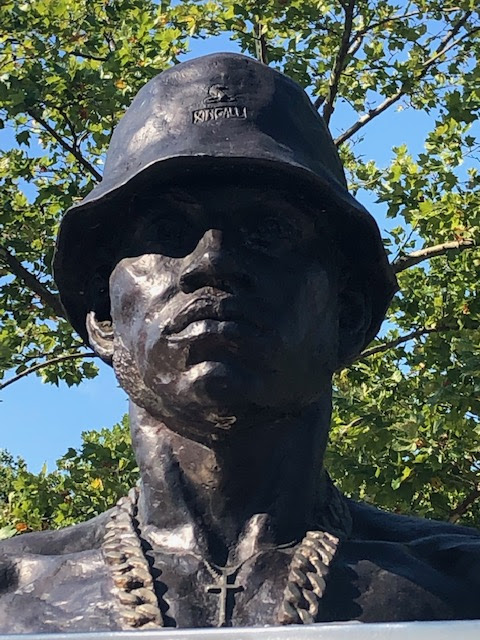Yesterday and the day before, I continued my recent pattern of riding early to beat the heat. There wasn't quite as much heat yesterday, though, so I rode a bit longer than I'd been riding during the past week.
Once again, I zigged and zagged through Queens and Brooklyn, albeit through different neighborhoods, along different streets. If you grew up in the same Brooklyn neighborhoods where I spent my childhood, you think of the borough as a working-class enclave full of brick rowhouses and tenements inhabited by families of your ethnic group. If you lived in some of the neighborhoods in which I rode yesterday, it was a much tougher place. But if your acquaintance with the "Borough of Churches" or "Borough of Homes" is more recent--or if you are simply younger, whiter or more affluent--your image of Brooklyn could include brownstones or self-consciously trendy cafes where the tatooed, the bearded, the pink-haired and the Doc Maartens-wearing spend $40 to wash down a slice of advocado toast with a craft cocktail.
But another, older Brooklyn sometimes makes a surprise appearance. I hadn't ridden or walked by the intersection of Bushwick Avenue and Kossuth Place in a while and I'd all but forgotten about the church that graces it:
In a borough of brick and brownstone--and, increasingly, glass and steel-- only a few wooden buildings of any kind remain. They were more common before Brooklyn became part of New York City and much of the borough beyond the waterfront was still rural. At that time, the Dutch influence was still strong--hence the Reformed church.
It will be interesting to see what the building looks like when it's restored. I love "survivor" buildings: the ones that remain after everything else around it has been destroyed and replaced. They look different, but not out-of-place because survivors are never out of place. At least that's what I tell myself: I might be slower than I was, but I am still cycling and have no plans to stop.
.jpg)





.jpg)
.jpg)






















.jpg)
.jpg)







.jpg)
